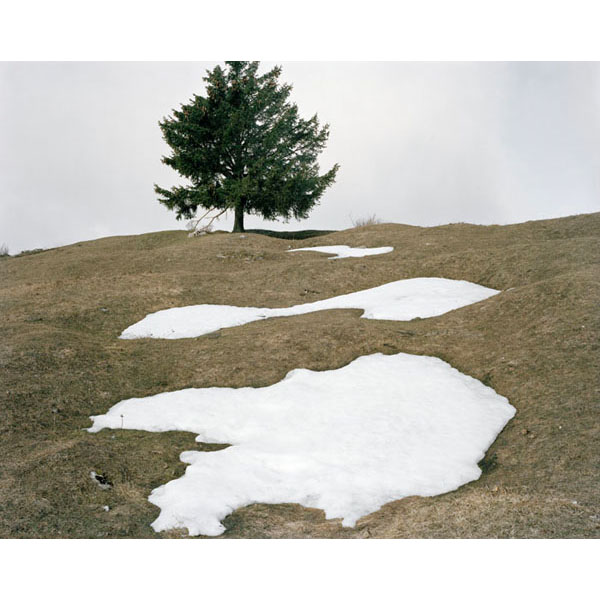
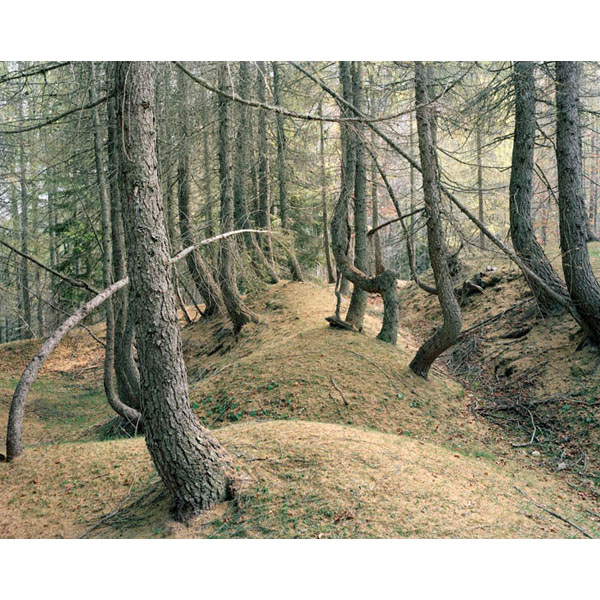
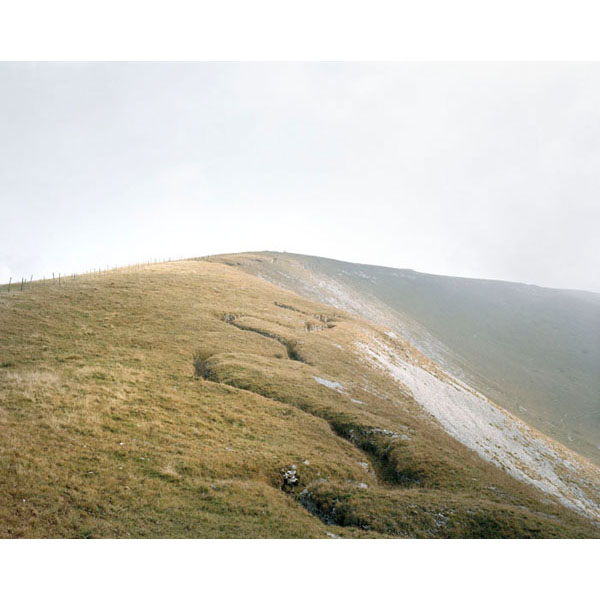
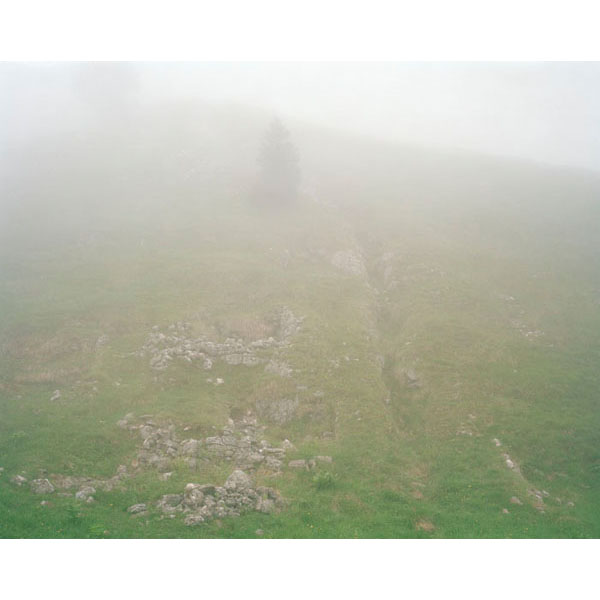
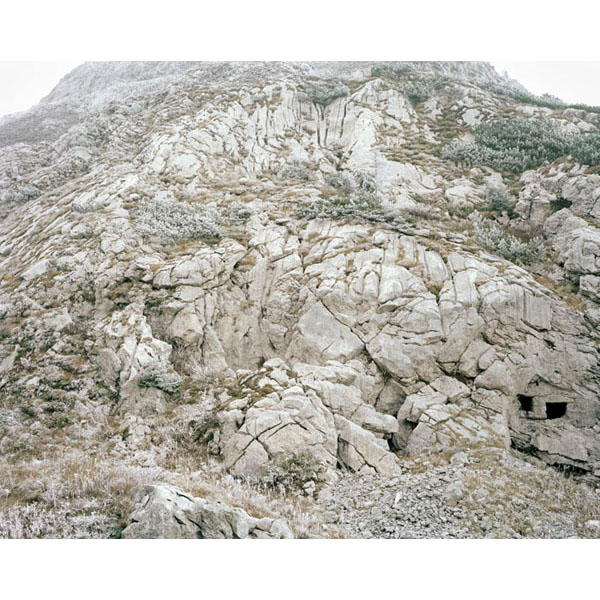
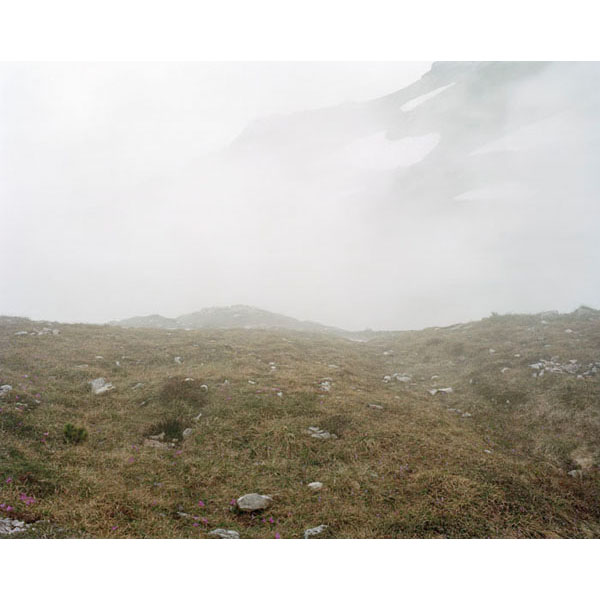
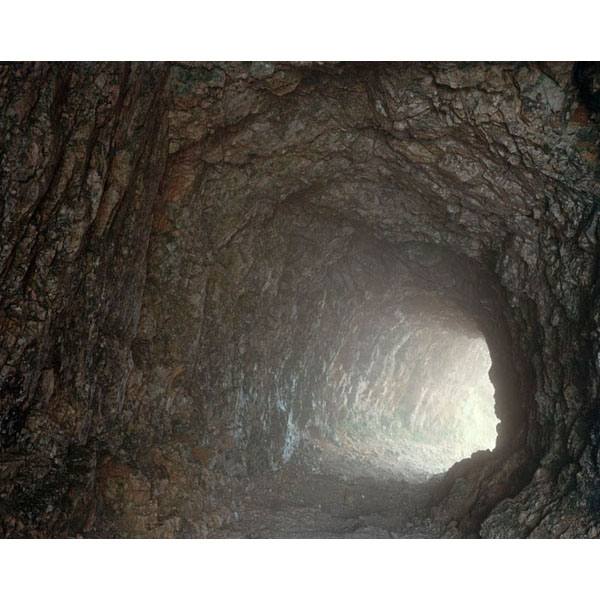
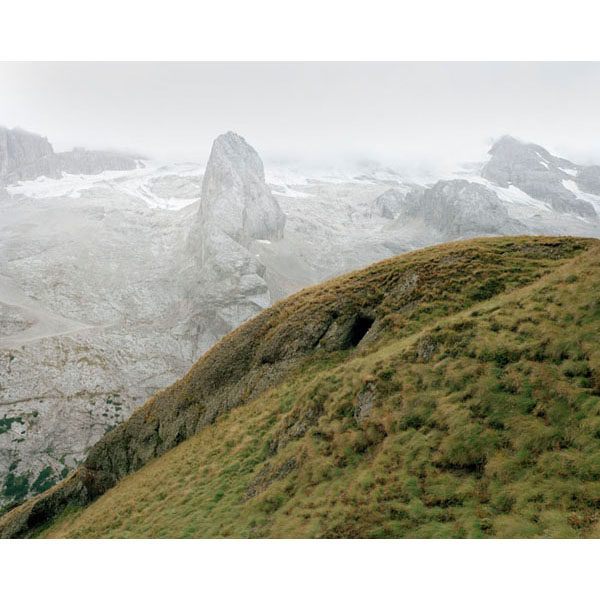
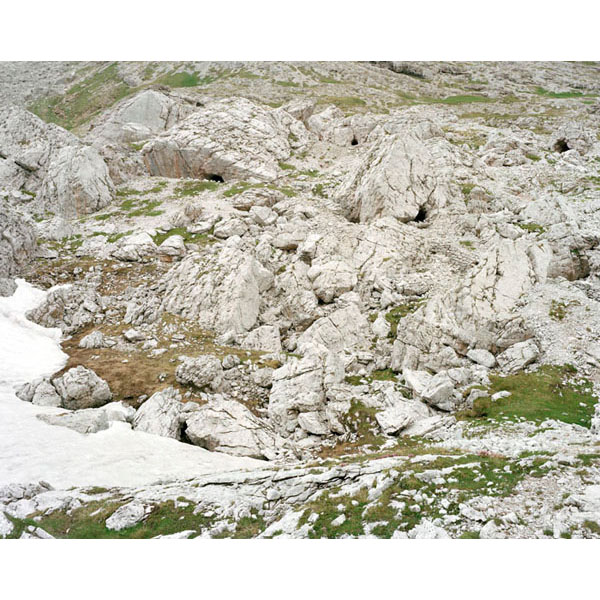
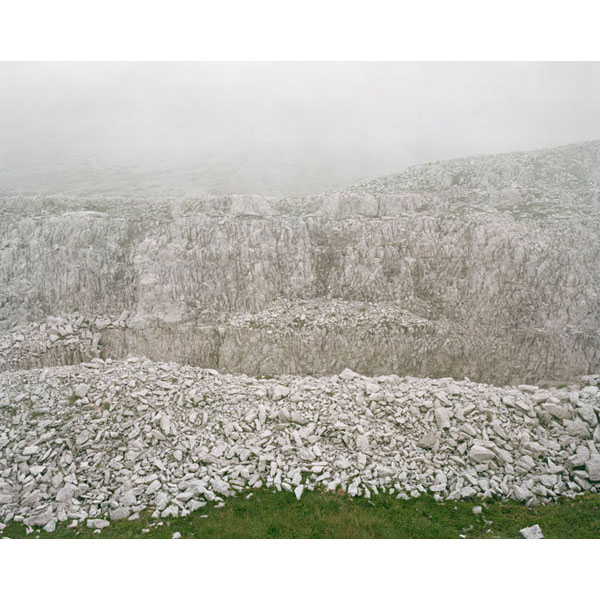
The First World War began almost a century ago. It was a war of ground positions and trenches.
To Face
landscapes along austrian and Italian front of the first world war
2008-2011
War broke out in many different places. Battles between Italian and Austrian soldiers were mostly fought in the Alpine mountain range, in the Prealps, and in the Carso region to the east. For the first time in history fighting took place at incredible altitudes, in regions where the ferocity of the fighting was exacerbated by hostile climactic and environmental conditions. These virgin mountainsides were to become the home for thousands of soldiers, and traces of the battles that were fought here can still be found today. Like all people, I first learned about events of the First World War at school and, as is the case with a lot of people from my generation, I also heard members of my family talk about them. Events date back almost one hundred years, but some exploits are still passed down directly in stories that have crossed three generations. My father, born in 1915, and my mother, 1923, retold stories they’d heard from their parents. They reported events that had happened to people they’d known: relatives, friends and neighbours. Historical facts have survived in the form of direct personal accounts that are now approaching the edge of their existence. I have tried to pick up the last surviving remnants of this thin thread of memory in the very places where events unfurled, before they leave the private sphere and drift into oblivion. Transformations of the landscape are often still visible, especially high up in the mountains where human time has stood still and nature alone has been changing. At first sight these landscapes appear natural, but they are really the footprint left by many battles and those of hundreds and thousands of soldiers who served here. These photos were taken – and will continue to be taken – along the whole length of the front between Italy and Austria both up in the Alps and Prealps as well as in the Carso region. The photographs record the gradual disintegration of the scars left on the mountain by warfare. They show how nature is absorbing these trenches, caves, peaks ravaged by mines, thousands of bomb craters and the ruins of sheds and storerooms constructed with local raw materials. These sites are now popular with trekkers; some of them have become famous holiday destination, oases of peace and meditation. Now it is difficult to conjure up the scenes of battles that took place here almost one hundred years ago. Today’s “innocence” seems to have cancelled or forgotten the violence of the past.
